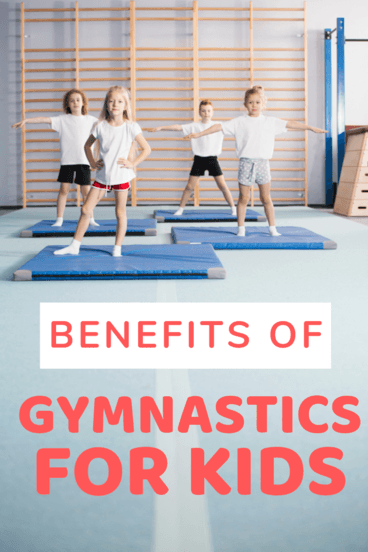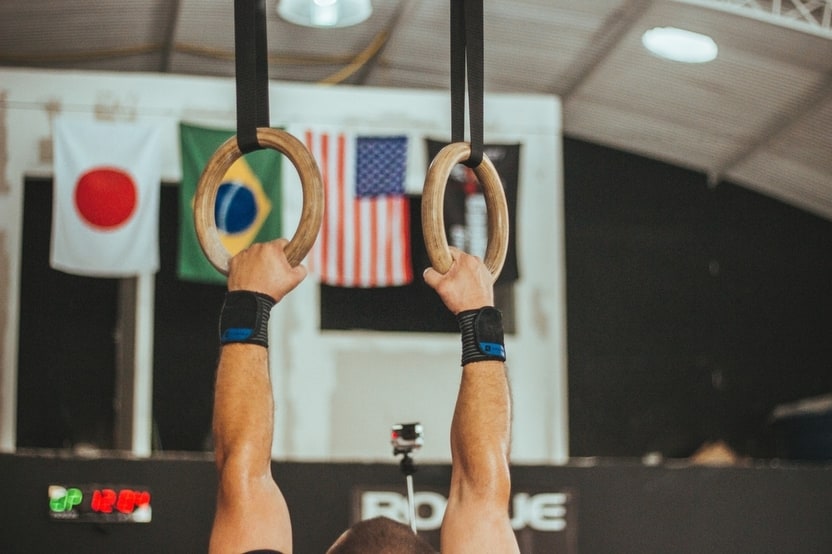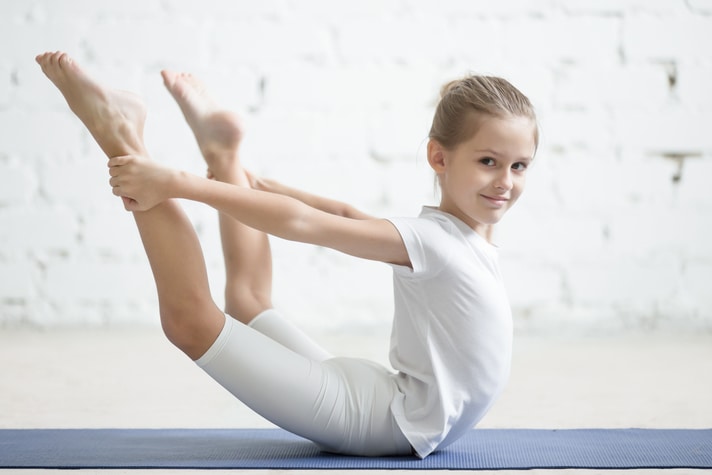Image Source: Designed by yanalya / Freepik
You might wonder about the topic “Gymnastics for toddlers and babies,” and be asking yourself if it’s acceptable to send a toddler of only two to three years of age to gymnastics.
But believe it or not, some gyms have gymnastic classes for children and babies, starting from the age of four months. There are huge benefits to starting gymnastics for kids at that early age.
In this article, For Kids will let you know about all the benefits of gymnastics for toddlers and provide you with an answer to the question, “What age should a child start gymnastics?”
Gymnastics for toddlers
Table of Contents
10 benefits to starting gymnastics classes for toddlers at an early age

Why is gymnastics good for toddlers?
- It increases the muscle density and the strength of toddlers so they can become fit.
- It helps kids to learn how to balance themselves.
- Kids build up their gripping strength by hanging from bars and learning to swing.
- Toddlers may even learn how to do forward rolls when tumbling.
- It helps kids with hand, eye and foot coordination and visual tracking, by making use of balls and bubbles.
- Children learn how to listen to parents and follow directions.
- It’s a gateway to other sports such as soccer, volleyball and handball.
- It aids with the development of key milestones for babies: physically, mentally and socially.
- Gymnastics improves the self-confidence of the child, making kids feel good about themselves.
- Gymnastic classes are usually full of fun, and the kids love to go.
The best age to start gymnastics for kids
The optimal age for a child to start a serious kids gymnastics class is five years old, but some sections of gymnastics accept children at two or three years.
Some gyms and academies have gymnastics classes for babies from the ages of 4 to 10 months old, and then 10 to 19 months, proceeding all the way up through grade school.
At first,, children perform exercises for general physical development. This is the preparatory stage for more special and difficult elements of gymnastics.
After general training, tots can participate in gymnastics programs that combine tumbling and beam and bar activities.
Reading about how to choose rhythmic gymnastics equipment may also help curious parents out.
Disadvantages of playing gymnastics for children
1. Negative impact on growth
Constant training, which increases muscle mass and the load on the spine of the child, can have an impact on development and growth.
Most parents note that a tot grows poorly while children in adolescence noticeably stretch.
Trainers explain this via the peculiarities of genetics and the fact that children with low stature are often selected for professional sports, since their stature will allow them to achieve success in international competitions in the future.
2. Risk of injuries
To an unprepared person, jumping and exercises on a vaulting horse and parallel bars seem dangerous and threatening to the health of the future champion.
In fact, up to the age of seven, a child should be engaged in general physical training. Only after two to three years of classes should they move on to special elements.
Each element is worked on in detail, gradually, but unfortunately, this doesn’t reduce the percentage of injury to zero.
3. Delayed puberty
In young girls, due to the load on the body, late puberty and problems with the menstrual cycle have been noted in gymnastics. In principle, this can occur within any sport.
Types of gymnastics

There are actually seven official types of gymnastics games:
- Men’s Artistic Gymnastics
- Women’s Artistic Gymnastics
- Rhythmic Gymnastics
- Tumbling
- Acrobatic Gymnastics
- Trampoline
- Group Gymnastics
General skills for beginners in gymnastics
Beginners usually learn falling movements on the floor when starting to learn gymnastics skills.
This is a necessary skill they acquire before entering into more complex stunts.
The practicing of this movement will lead to the person’s ability to perform other techniques (such as the ones outlined below) smoothly and achieve the correct physical posture.
1. Forward roll
Steps:
- Put your hands on the floor in front of you and bend your elbows.
- Put your head in your arms and flex your chin.
- Push your legs to the top of your back while letting your body roll forward and your hands press on your head. Follow the curve of your spine as you roll.
2. Backward roll
Steps:
- As soon as your butt and back touch the floor, bend your arms and reach behind your ears.
- Your hands should grab the floor as you continue to retreat on your shoulders. This will protect your body and remove any pressure from your neck and head.
- Finish the roll, letting momentum pull your legs and hips over your head.
- When (and only when) your buttocks roll vertically over your body, you must press your arms on the floor to complete the rotation and land on your feet.
A psychological portrait of the gymnast
The main features of gymnasts include endurance, patience, perseverance and resilience of character.
A child must be purposeful about executing movements and be ready to perform the same elements within a performance.
A lack of fear and self-confidence play a significant role in development because you have to make progressive jumps, climb high on the horizontal bar and perform a variety of exercises on a pommel horse.
The psychological attitude of each child will be reflected in their future results. Therefore, the earlier you teach a child to focus and overcome failures, the better.
Summary
Gymnastics is a sport that requires a tremendous amount of endurance, patience and skills.
It’s a sport that hardens your child for the rest of your life and is considered a gateway to other sports for kids.
The child will learn to overcome difficulties and fear, to suffer defeats and to rely only on themselves.
All the elements are executed alone, with instructions from coaches, and the end result of each will depend only on the child.
A gymnast comes to understand how to take responsibility and realize that something like a sprained palm isn’t the end of a sports career.
By having success in the school of gymnastics, a child will learn how to set goals and achieve the impossible through their own efforts.
You can do a Google search for “gymnastic academy for toddlers near me” to find lists of the nearest academies and camps available in your city.
References
- Benefits of Bandwidth Feedback in Learning a Complex Gymnastic Skill pdf – Journal of Human Kinetics
- Women’s gymnastics injuries: A 5-year study – The American Journal of Sports Medicine.
- Effect of past gymnastics participation on adult bone mass – the American Physiological Society.
- Teaching children gymnastics book

